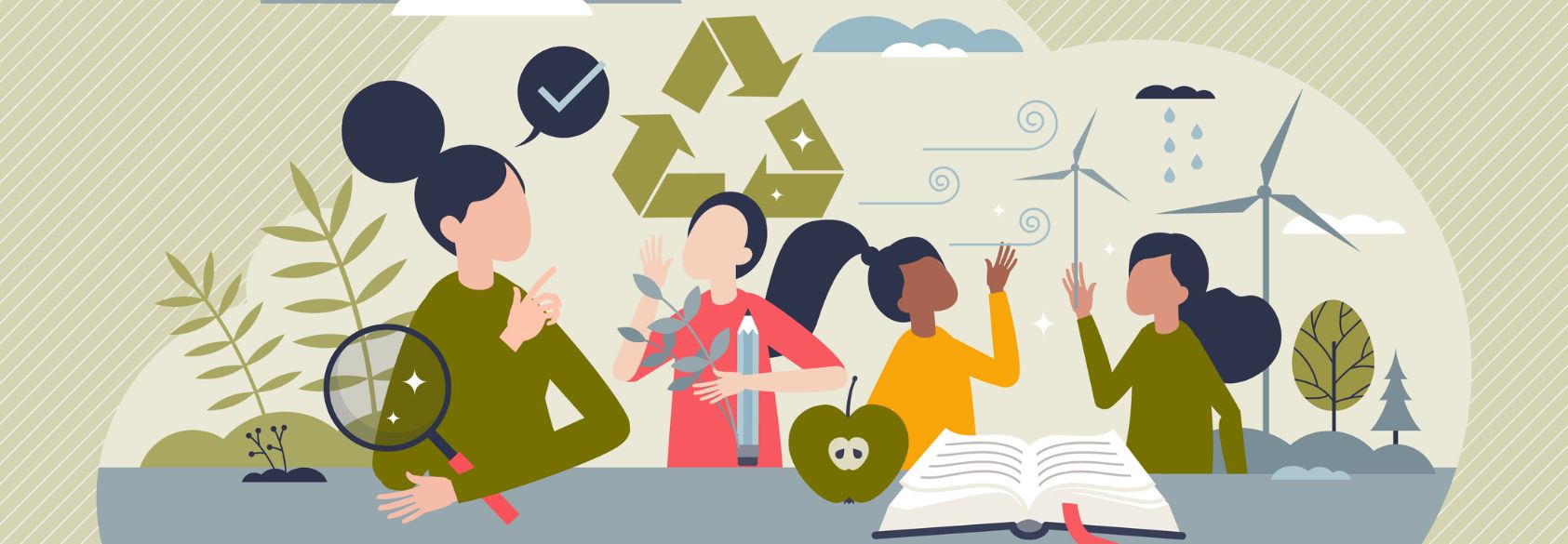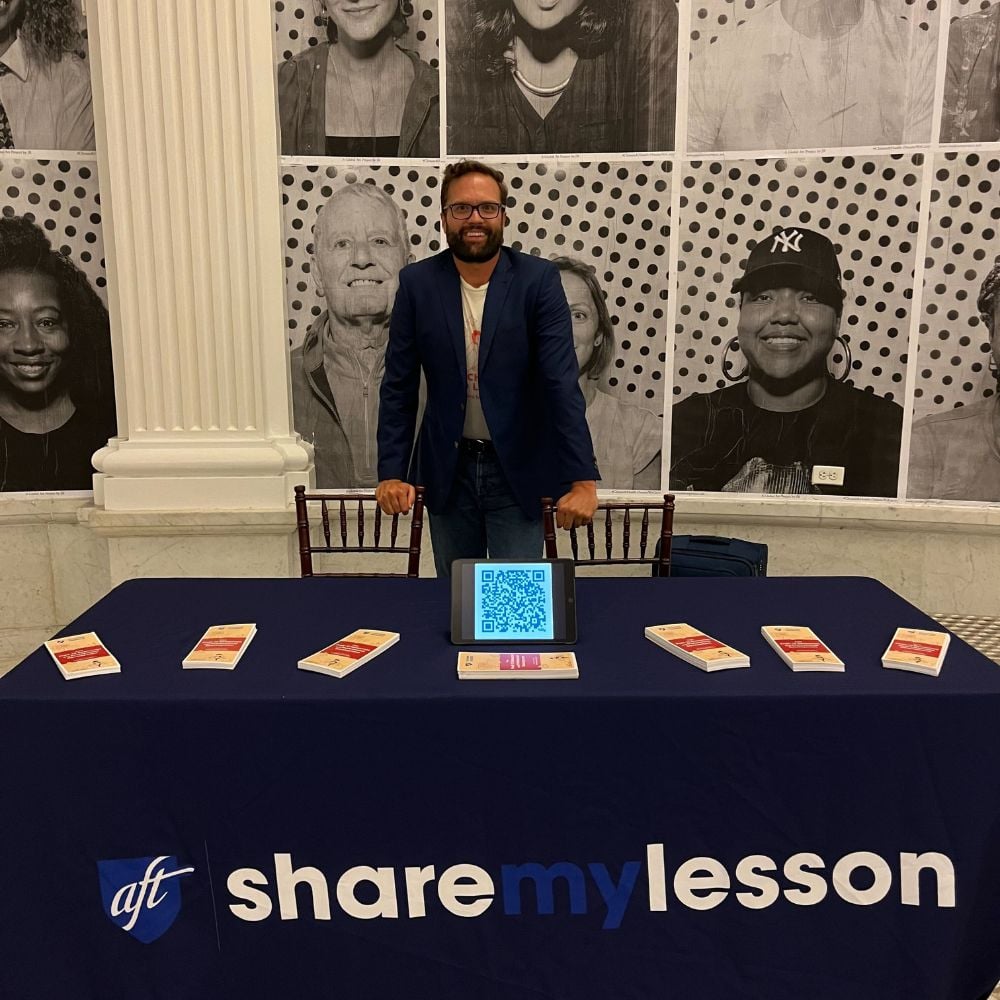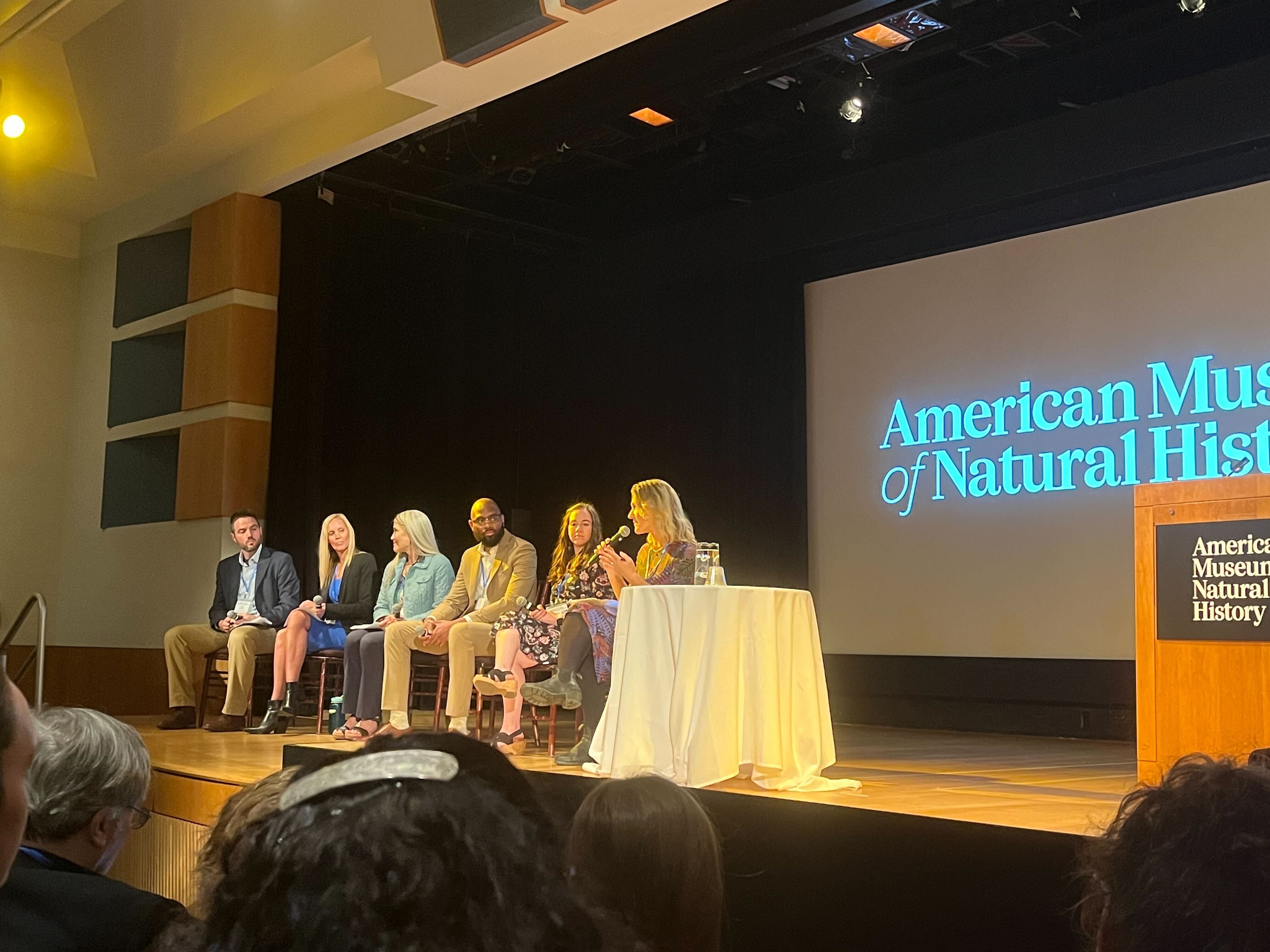Bring Climate Education to Your Classroom: 8 Simple Steps for Teachers
Bring climate education into your classroom with 8 simple steps! Empower students to act on climate change through interdisciplinary and hands-on learning.

How have you tried to incorporate climate education in your classroom?
Share
October 9, 2024 | 1 comment
Bring climate education into your classroom with 8 simple steps! Empower students to act on climate change through interdisciplinary and hands-on learning.
Share
Ever wonder what it would take to weave climate education into your day-to-day teaching? It might be easier than you think. My passion for environmental issues grew out of a love for green spaces—whether it was hiking, planting a garden in my yard (or windowsill!), or just spending time outdoors. Now, as part of my work with the AFT’s Share My Lesson, I’ve enjoyed bringing that passion into the resources we provide for our 2.2 million members. The educators, partners, colleagues and community members I work with inspire me daily with their commitment to promoting climate literacy, empowering students and helping create a plan for equitable, accessible climate education resources for teachers, students and communities.
It’s one thing to be passionate about climate education, but seeing that passion come to life with the right resources is another. That’s why I was thrilled to attend Building a Resilient Future: New York's Climate Education Movement during Climate Week NYC. Hosted by Share My Lesson partner SubjectToClimate, the Climate and Resilience Education Task Force, and the American Museum of Natural History, this event celebrated the launch of the New York Climate Education Hub—a major step toward giving educators the tools they need to inspire the next generation of climate leaders. The discussions not only emphasized the importance of interdisciplinary, place-based education but also energized me to continue advocating for equitable, accessible resources for all teachers and students.

At Share My Lesson, we’re dedicated to equipping educators with the resources they need to teach climate change in accessible and equitable ways. Climate change is one of the defining issues of our time, and Gen Z, in particular, is feeling the pressure. With rising levels of "eco-anxiety" affecting their mental health, it's crucial that we empower young people with meaningful climate education.
Research by Britt Wray, director of CIRCLE at Stanford Psychiatry, reveals that many in Gen Z feel abandoned by government inaction. Over half of young people in a global Lancet study believe humanity is doomed, and nearly 40 percent are reluctant to have children due to fears for the future.

This makes it clear: We need to channel this anxiety into action through high-quality education. From free, for-credit professional development webinars to tailored lesson plans and toolkits, we offer comprehensive support to help educators meaningfully introduce climate literacy into their classrooms.
So, how do we make climate education meaningful for teachers and students alike? During Climate Week NYC, the discussion panel tackled this question head-on. Educators, students and climate leaders came together to discuss what’s working, what’s needed, and how we can better empower our students to lead the charge.
Here are some of the top takeaways from the event—complete with actionable strategies that can turn any classroom into a hub for climate action:
One of the easiest ways to integrate climate education into your classroom—without feeling overwhelmed—is to make it interdisciplinary. Take a cue from science teacher and AFT member Sean McFadden at the Eagle Academy for Young Men, who successfully integrated climate education into other subjects, creating a more well-rounded learning experience. For example, by having students calculate their ecological footprints and analyze the environmental impact of their own lifestyles, McFadden brings together math, social studies and science. His approach helps students not only grasp key concepts but also reflect on their personal contributions to climate change, making the topic more engaging and relatable.
If you’re a teacher looking to introduce climate change, consider weaving it into subjects like social studies, art, and even math. This will not only enrich your students’ learning but can also make climate change more relevant and relatable.
One of the biggest challenges in climate education is addressing eco-anxiety—the sense of helplessness and stress students can feel about the scale of the climate crisis. Rachel Arbor, founder of Gaia Scholastic and AFT member, wove climate education into her English language arts class. She shared how her students participated in nature journaling, not only reducing their stress but also connecting them to the environment. They hit ELA standards while gaining a deeper appreciation for nature—and without extra strain on the teacher.
If your students can’t physically get outside, virtual nature experiences or simple classroom discussions about nature can also work wonders. Building emotional resilience through nature helps students approach climate change from a healthier, more hopeful perspective.
Climate education doesn’t have to be an overwhelming topic, especially for students. In fact, starting with small, hands-on projects can be incredibly powerful. McFadden shared how a simple campus cleanup project during New York City’s Climate Action Day transformed his students’ attitudes. Students who initially didn’t care much about climate change suddenly found pride in contributing to their community.
Whether you’re organizing a classroom recycling program, building a hydroponic garden or helping students calculate their personal ecological footprints, small, local actions can empower students and show them that they can make a difference.
We all know that when students take ownership, amazing things happen. Meredith McDermott, director of sustainability for the New York Public Schools, highlighted the power of student leadership in climate action. The Climate Education Leadership Team in NYC schools is student-led, which has sparked more engagement among their peers.
Encouraging student leadership can be as simple as letting kids take charge of a project or creating a climate action club. Sometimes, all it takes is one passionate student to inspire their classmates, and suddenly you have a whole school taking action.
Climate change can feel distant for many students. But McFadden found a brilliant way to bridge that gap—by focusing on why trees matter. His students used local data to compare tree coverage in different neighborhoods, and suddenly a seemingly distant issue became personal.
Whether it’s tracking air quality or mapping tree cover, using local data can help make climate change feel real. When students see how it impacts their own community, they’re more likely to care—and take action.
I get it—teachers are already stretched thin. That’s why it’s crucial to have easy-to-integrate climate education resources. During the panel, it became clear that time-saving tools like the New York Climate Change Education Hub make a world of difference. Another example is the Urban Advantage program, which partners with museums and provides field trips, workshops, and professional development opportunities for New York City teachers. These resources seamlessly incorporate climate education into existing curricula without overwhelming teachers.
If you’re a teacher looking for resources that won’t overwhelm you, check out our climate education collection. From interdisciplinary lesson plans to full climate units, there’s something for every classroom.
We don’t have to leave students feeling hopeless. Ro Kinsler from the American Museum of Natural History emphasized the importance of teaching solutions. By highlighting the ways communities are adapting to and fighting climate change, you replace fear with action.
Climate education isn’t about instilling fear—it’s about empowerment. Showing students real-world solutions inspires them to believe that they, too, can be part of the solution.
Let’s face it, we’re all lifelong learners. If you’re hesitant about diving into climate education, investing in your professional development is a great place to start. McFadden shared how joining a community of educators has transformed his teaching practice, helping him discover new tools and strategies for climate education.
Fortunately, Share My Lesson offers free professional development webinars and courses tailored to climate education, so you can learn at your own pace. Check out a few of our top sessions this year:
Climate education goes beyond a single lesson—it's an interdisciplinary movement to improve our world. By equipping students with knowledge and tools across subjects, they can forge their path to becoming the leaders and problem-solvers of tomorrow.
Ready to dive in? Check out Share My Lesson’sClimate Change Education and Sustainability collection for preK-12 educators to find the resources, lessons and professional development opportunities that will help you integrate climate education into your classroom. Let’s inspire the next generation to not only understand climate change but also take meaningful steps to stand up to some of the world's biggest environmental challenges.
Explore more resources for educators to find a wide-range of relevant preK-12 lessons on climate change or supporting young people as they continue to lead the conversation around the climate change crisis.


Great article! I especially like point #7. Students are very much aware of the negative effects of climate change. Now, let's empower them to find solutions!